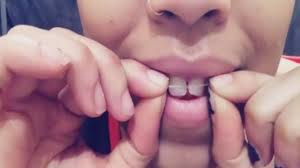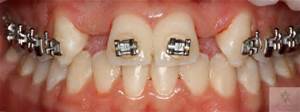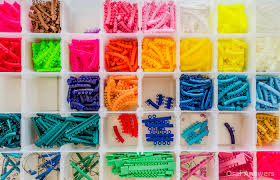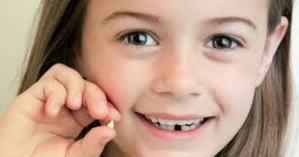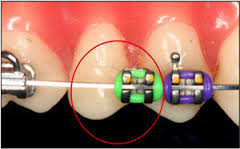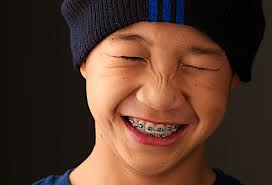
People get braces for different reasons. Some seek out orthodontic care at the referral of their general dentist who has recognized a particular problem with their bite. The American Association of Orthodontists (AAO) recommends that children be seen by an orthodontist around age 7 when the 6 year molars have erupted. Most children will not need braces at this age but there are a few who may need some limited appliances to help correct a thumbsucking habit or to hold space after the early loss of a baby tooth. The average age for girls to need full braces is 10-11 years and for boys 11-12 years. The orthodontist can determine at an early age if braces will be needed in the future by doing a clinical examination and evaluating radiographs to look at the developing permanent teeth.
Some children may have flared protrusive upper incisors and an overbite which would make them prone to fracture. They would benefit from some early treatment to lessen the severity in the future. Some children have an overgrowth of the lower jaw and need some early growth modification to help normalize the bite.
The decision to get braces as an adult may be as a confidence booster in their job or relationships. They may never have had the opportunity as a child to get them and it is something that has always bothered them.
Whether it is for aesthetics, a bite problem, or simply to improve your confidence, braces are always a good option. Call for a consultation to get an orthodontist’s opinion on your particular needs so you can make an informed decision as whether it is the best choice for you.
 Did you miss out on having the opportunity to have braces as a child but it’s something that still bothers you as an adult? Well, it’s not too late. Most adults with healthy bones, gums, and teeth can still have braces placed to improve the alignment of the teeth. It is true that a child’s teeth move more easily in response to a force because of the malleability of the bones and because everything is in a state of transition during the growing years. The bones become denser as we age and often it takes longer to move the teeth as an adult. If the bite is off because of a skeletal problem such as an overbite, crossbite or underbite, it may be necessary to have braces in combination with orthognathic surgery. The teeth can be aligned within the separate bony bases but cannot be matched into a perfect bite without growth in your favor. That is why it is important to allow the orthodontist to evaluate your bite clinically and with the use of a panoramic and cephalometric radiograph and photographs to study your face, teeth and jaw alignment. If surgery is needed, it is done by an oral surgeon mid-treatment with the braces on. Orthodontists and oral surgeons work as a team to plan the treatment from start to finish.
Did you miss out on having the opportunity to have braces as a child but it’s something that still bothers you as an adult? Well, it’s not too late. Most adults with healthy bones, gums, and teeth can still have braces placed to improve the alignment of the teeth. It is true that a child’s teeth move more easily in response to a force because of the malleability of the bones and because everything is in a state of transition during the growing years. The bones become denser as we age and often it takes longer to move the teeth as an adult. If the bite is off because of a skeletal problem such as an overbite, crossbite or underbite, it may be necessary to have braces in combination with orthognathic surgery. The teeth can be aligned within the separate bony bases but cannot be matched into a perfect bite without growth in your favor. That is why it is important to allow the orthodontist to evaluate your bite clinically and with the use of a panoramic and cephalometric radiograph and photographs to study your face, teeth and jaw alignment. If surgery is needed, it is done by an oral surgeon mid-treatment with the braces on. Orthodontists and oral surgeons work as a team to plan the treatment from start to finish.
